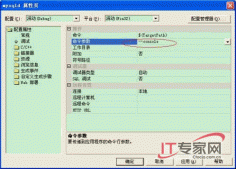1.
现在工程(不是Src)上右键--Build Path--Add External Archives,选择驱动下的那个jar包,这是release版本,bin目录下的是debug版本。
示例在docs下的connector-j.html,里面有例子(其中的test是数据库名,换位自己的)。
import java.sql.Connection;
import java.sql.DriverManager;
import java.sql.SQLException;
Connection conn = null;
...
try {
conn =
DriverManager.getConnection("jdbc:mysql://localhost/test?" +
"user=monty&password=greatsqldb");
// Do something with the Connection
...
} catch (SQLException ex) {
// handle any errors
System.out.println("SQLException: " + ex.getMessage());
System.out.println("SQLState: " + ex.getSQLState());
System.out.println("VendorError: " + ex.getErrorCode());
}
2.可以直接在MySql控制台下创建数据库,也可以在通过执行 "\. 绝对路径名"。
“--”是注释符。
View Code
import java.sql.Connection;
import java.sql.DriverManager;
import java.sql.ResultSet;
import java.sql.SQLException;
import java.sql.Statement;
public class mysql {
/**
* @param args
*/
public static void main(String[] args) {// 多个try合并到一块,然后使用source --- format
// TODO Auto-generated method stub
//若是用到finally则需要把声明放在try外边
Connection conn = null;
Statement stmt = null;
ResultSet rs = null;
try {
Class.forName("com.mysql.jdbc.Driver");// 后面若是加上".newInstance"则还需要加上几个抛出异常
conn = DriverManager.getConnection("jdbc:mysql://localhost/mydata?"
+ "user=root&password=root");
/*
* java.sql.Statement; 不是com.mysql这个包; 二者不可以同时存在
*/
stmt = conn.createStatement();
rs = stmt.executeQuery("select * from info");
while (rs.next()) {
System.out.println(rs.getString("name"));
}
// Do something with the Connection
} catch (ClassNotFoundException ex) {
// handle any errors
ex.printStackTrace();
} catch (SQLException ex) {
// TODO Auto-generated catch block
System.out.println("SQLException: " + ex.getMessage());
System.out.println("SQLState: " + ex.getSQLState());
System.out.println("VendorError: " + ex.getErrorCode());
} finally {
try {
if(null!= rs) {
rs.close();
rs = null;
}
if(null!= stmt) {
stmt.close();
stmt = null;
}
if(null!= conn) {
conn.close();
conn = null;
}
} catch(SQLException e) {
e.printStackTrace();
}
}
}
}












